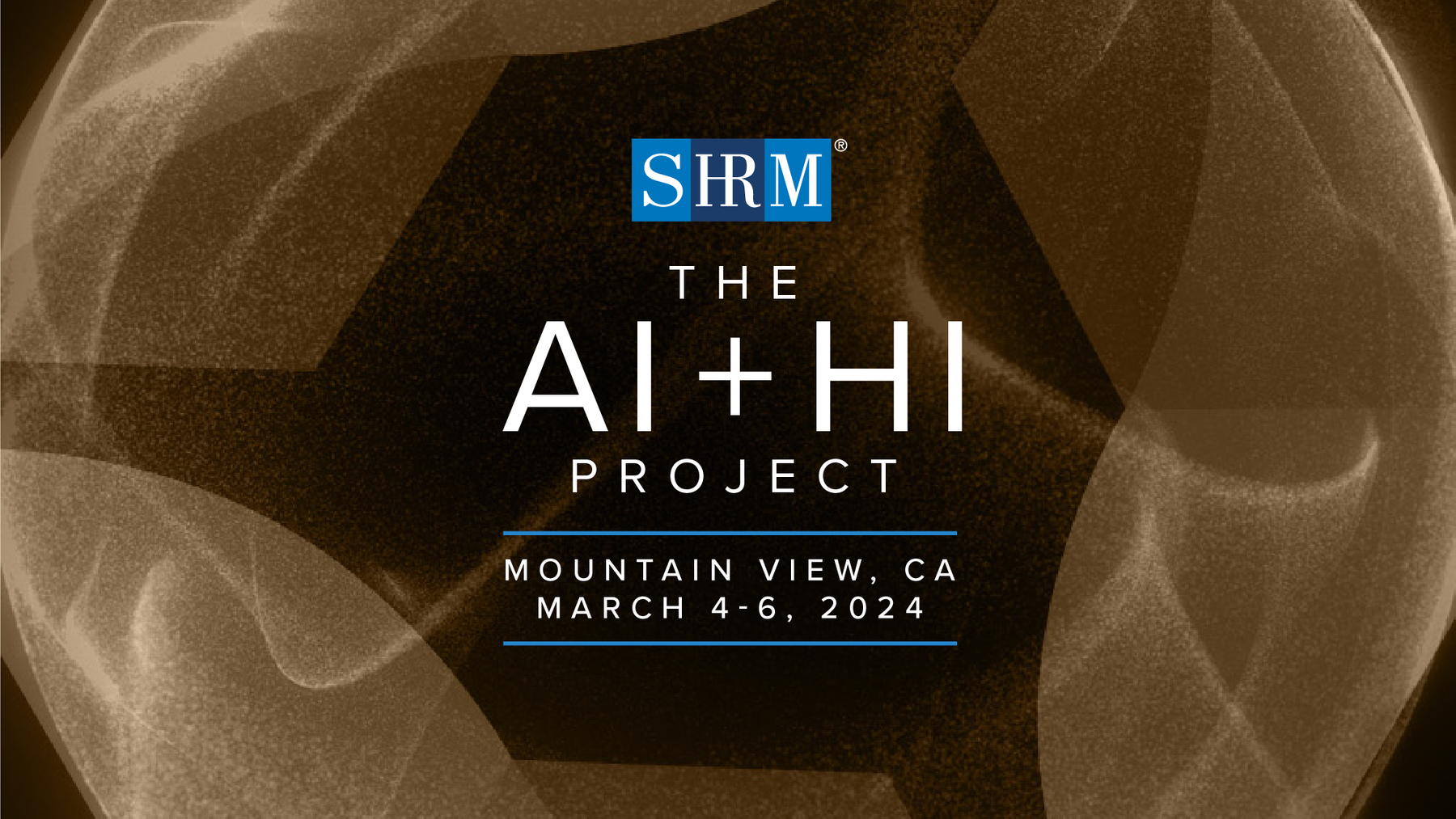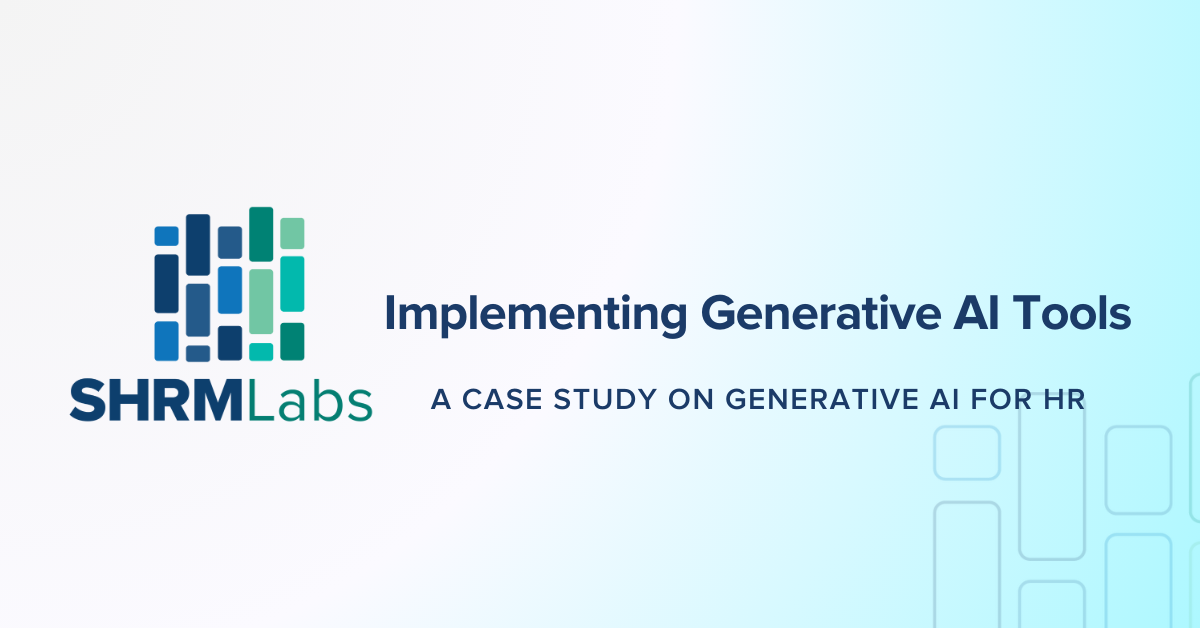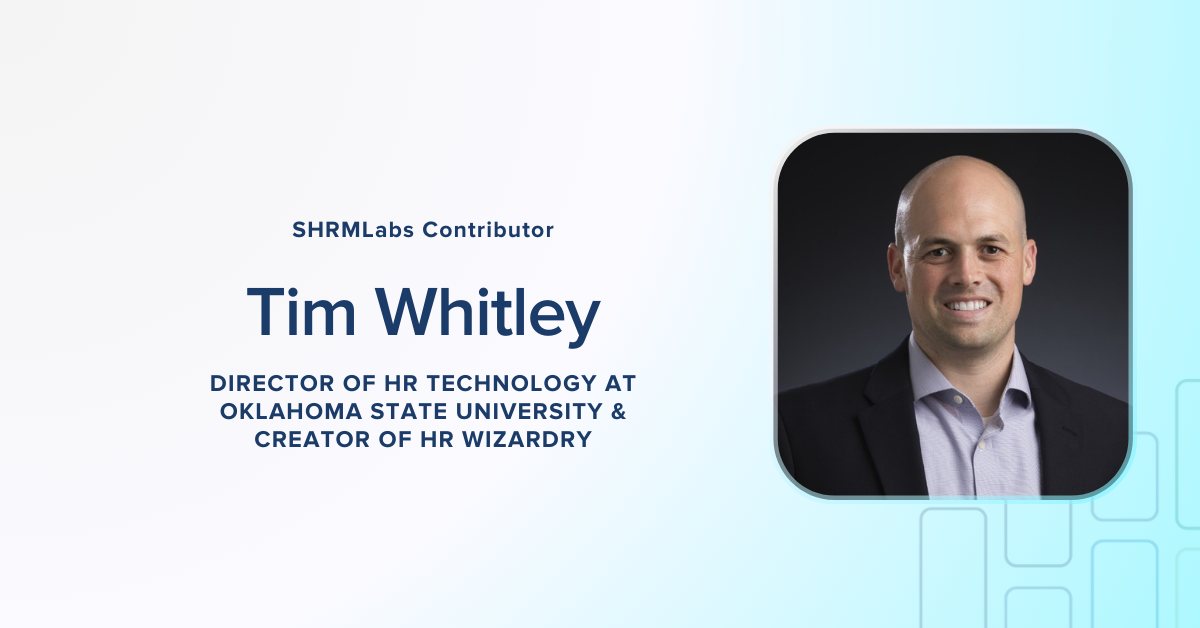Before we begin…
Welcome to our brand new SHRMLabs newsletter. We are expanding our resources to bring you the best possible information from leaders in HR technology and transformation.
My name is Trevor Schachner, Product Manager and Workplace Innovation Specialist at SHRMLabs. You will hear from me as well as my colleagues every other week with the release of each new edition. Let us know any topics you’d like to hear about related to workplace tech and we will consider them for future editions of the WorkplaceTech Pulse.
Introduction
Hello and welcome to our first WorkplaceTech Pulse edition of 2024! Thank you for your patience as we reflected on the success of last year and started planning for the year to come. There are many exciting topics, writers, discussions, events and more in store this year. Let’s dive into this edition.
More organizations are starting to adopt enterprise-scale AI tools to help push their businesses forward. HR teams are prime candidates to adopt and use many of these new tools to help with talent acquisition, operations and strategy. But with adoption of new technologies comes new challenges. Privacy, security, trustworthiness and bias, among others, are all valid concerns with new AI tools. Change management timelines, while already long, could become even more complex, considering these risks. But with these risks come opportunities for businesses to grow and achieve their goals in new ways.
In this edition, we will dive into a case study on implementing generative AI (GenAI) tools within an organization and how one HR professional is using them to her advantage! Joining us this week is Tim Whitley, director of HR technology at Oklahoma State University and creator of HR Wizardry, where he shares his incredible insights on all things HR tech.
Tim–over to you!
Thank you, Trevor! I have been passionate about HR tech since I first started supporting HR systems in 2014. I love working at the intersection of technology and strategy and seeing people get excited about using data and systems to enhance their work.
My favorite part of HRIS is supporting people working on the frontlines of HR, trying to make workplaces better while doing the day-to-day activities necessary for HR to function. They have a tough job!
Shala Andrews is one of those amazing professionals that I had the privilege to work with for many years. I credit her for inspiring me to share my HRIS experiences She is a season HR professional with over 15 years of experience in Human Resources. She currently works for a large national retailer that implemented an employee facing, enterprise-wide Generative AI platform.
I was thrilled when she agreed to let me interview her on her experience as a user with this tool and highlight the lessons other organizations can learn as they look to build Generative AI into their systems strategy. Below are my takeaways from that conversation
Be sure to check out all of our editions of the WorkplaceTech Pulse!
Background
Shala’s national retailer organization deployed an internal GenAI solution that was accessible to all corporate employees in six weeks. This project was successful because of the leadership’s emphasis on culture, communication and continuous improvement.
There is nothing magical about GenAI that makes it different from other technologies. It has some specific nuances that must be addressed. Still, the principles that require bringing people along on a change journey while addressing their concerns are no different than those in any other change initiative.
While this organization has many resources to support this type of initiative, I believe the underlying practices can be used by any organization, no matter the size.
Culture
Shala emphasized that technology is at the core of how this company operates. It considers itself a technology company first and a retailer second. This focus drives how it hires and promotes people; you are expected to understand the importance of and use technology in your daily work.
Technology is a natural part of company workflows. Leaders decided to build the portal for this tool directly in their existing self-service application to ensure it was easily accessible.
Takeaway #1 – Culture is critical. Organizations of any size or budget can embrace a digital mindset. Take some time in 2024 to determine what creating a digital culture means for your team.
Communication
Leadership at this organization is all-in on communication. One of my favorite quotes from the interview is, “Bring the people along with you.” There were several strategies I captured that are key to any implementation:
- Project leaders spent time before deployment to listen to employees and understand their fears and concerns, such as job replacement, bias and accuracy. These were addressed consistently throughout the rollout.
- Find internal champions. The project team created pilot and development groups to provide feedback on the tool and test new features. These groups provided needed feedback and became the most prominent advocates in their teams for using these tools. Leadership messaging can only reach so far. People need to see their peers using it.
- Project leaders used a variety of mediums to train and communicate. Live and on-demand training, intranet, and resource groups allowed people to gather information in ways that suited them.
- Emphasize ongoing, practical training with actual prompts and use cases. Examples of basic prompts and use cases help overcome the unknowns with the tool. They give you a launching pad to get started.
Takeaway #2 – Don’t let your communication plan be the last item on your checklist. Start with a communication plan first and weave it through every deployment piece. Communication doesn’t stop when the project is over. For a technology change to “stick,” support and training must be ongoing and dynamic.
Continuous Improvement
Slow is smooth, and smooth is fast. The organization deployed quickly but iteratively, showcasing its agility in technology adoption and its commitment to thoughtful, people-centered change.
The tool was deployed in phases, starting with a pilot group and then deploying to all corporate employees. At first, they were restricted from entering private or confidential data in the tool as they validated data security. Now, they can input personal data and even upload attachments such as PDFs.
The company has a future road map that includes deploying to all employees. Shala is excited about the opportunity for front-line staff to use the tool, as she sees benefits for their productivity and engagement.
Takeaway #3 – Don’t let the size of a project keep you from getting started. A significant advantage of GenAI is that it is easy to deploy in pilot or test groups. Find a use case within your organization and test some GenAI solutions. This allows you to scale and get buy-in from your employees.
Use Cases
Shala’s favorite thing about GenAI is how it helps you start when staring at a blank page.
“It helps me break through that brain block, and then I’m like, ‘OK, I’m spinning,’ ” she said.
Below are some of the specific use cases we discussed. Note that all of these (with caveats) could be done with publicly available tools, so don’t let the lack of an enterprise tool at your organization prevent you from trying the following:
Writing communications. Shala can input raw thoughts and let the tool organize them into a cohesive structure. She can adjust the tone as needed for the audience or even adapt it to the tone of standard company messaging to make it cohesive.
Input notes from employee listening sessions, identify themes and organize them by sentiment (positive, negative or neutral). Categorizing text is a fantastic use case for GenAI, but you must be cautious with the input data. Make sure there is no identifiable information such as names.
Create action plans from survey responses.
Come up with talking points for a new manager check-in.
Summarize articles.
Key takeaways from this part of the discussion:
GenAI is not a magic wand. Shala mentioned throughout that the tool gives her starting material, but she shapes the final output. It’s ultimately about human augmentation.
Iteration is critical. The advantage of these tools over traditional technology is the ability to clarify, correct and expand on previous steps. You don’t have to start with the “perfect prompt.” Type in what you want, see what kind of output you get, and ask questions.
GenAI pulls out the weeds of unproductive tasks throughout your work. “The stuff I hate doing in my job is the stuff I want this tool to do,” Shala explained.
Using the tool regularly creates a snowball effect of confidence and competence. Once you’ve experimented and figured out what it’s good at, you are more prepared to take on new tasks.
Next Steps
Shala would like to use the tool more for data analysis. This is an area where a private generative pre-trained transformer (GPT) instance in an organization is an advantage and part of the long-term road map for deploying this tool. Tools such as ChatGPT have shown the ability to organize and categorize large amounts of data while providing visual output and insight.
Conclusion
To other organizations embarking on a similar journey, the key takeaways are clear:
As stated above, emphasize change management. Understand where you might face resistance and address those topics head-on. Leaders avoid the “elephants in the room,” but this creates a lack of trust and willingness to step into change.
Provide opportunities for feedback and co-development. The best use cases will come from the people using the tool, and they should be an essential part of the feedback and development plan.
Empower people to encourage their peers. Whether use cases are discussed on an internal social media platform or just a shared document, they will look different for everyone, and that community of peers will unlock the true potential.
Encourage top-down adoption. Employees are looking to their leaders for guidance and permission. If they see their leaders using the tool and encouraging them, they are more likely to use it themselves.
By following these practices, any organization can effectively integrate GenAI and other new technologies into their employees' daily work. These practices and mindsets foster an environment of continuous learning, agile thinking and innovation.

Discover The AI+HI Project
Join SHRM at Microsoft’s Silicon Valley Campus in Mountain View, California March 4-6 for an immersive experience in innovation and collaboration. The AI+HI Project is designed for business leaders to convene and discuss the latest trends and strategies in workplace AI. Hear from industry experts on the opportunities and risks of AI integration, and use key insights to forge powerful connections and future-proof your organization.

SHRM Labs, powered by SHRM, is inspiring innovation to create better workplace technologies that solve today’s most pressing workplace challenges. We are SHRM’s workplace innovation and venture capital arm. We are Leaders, Innovators, Strategic Partners, and Investors that create better workplaces and solve challenges related to the future of work. We put the power of SHRM behind the next generation of workplace technology.





